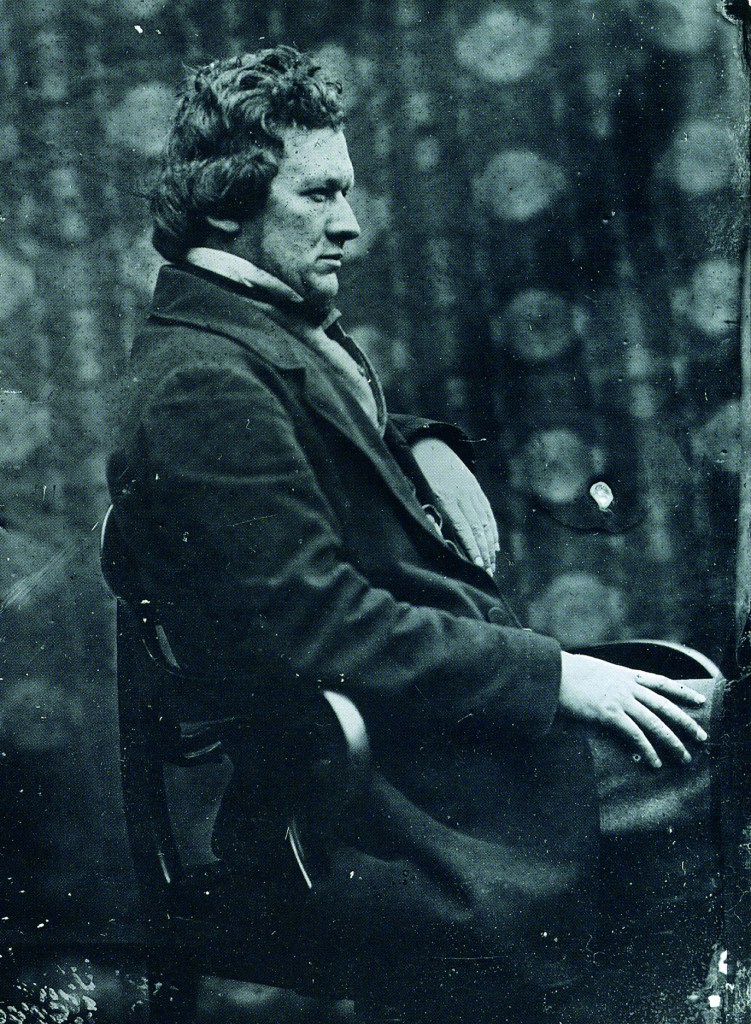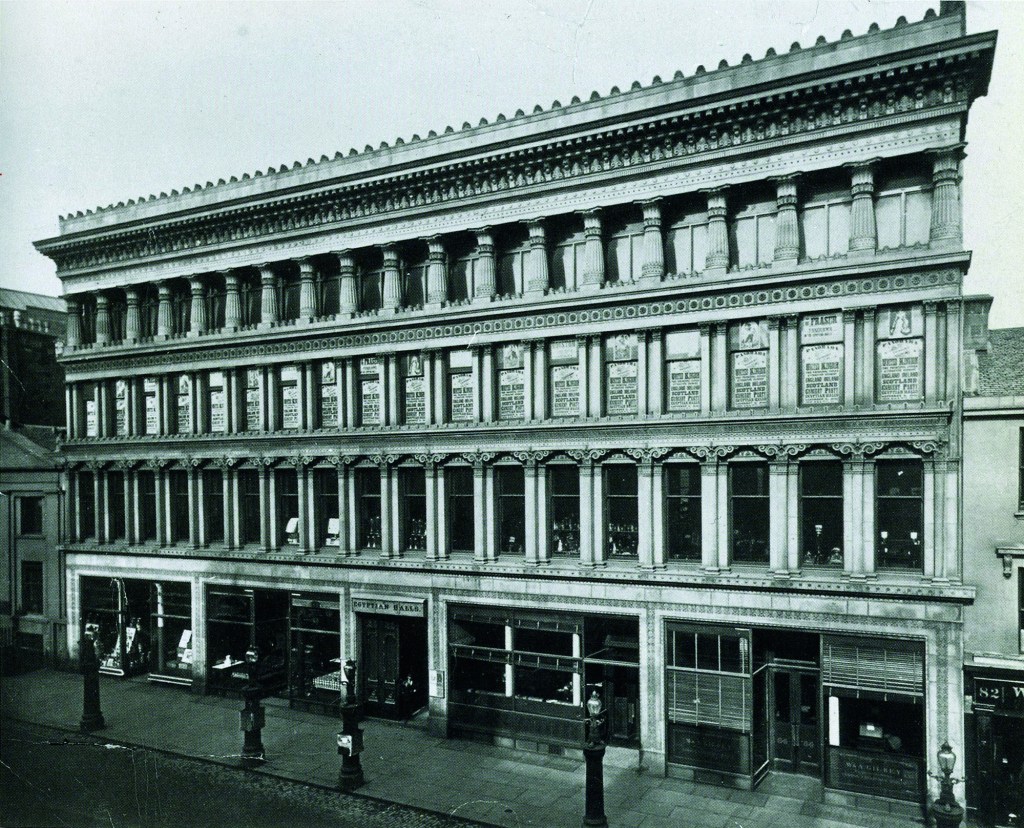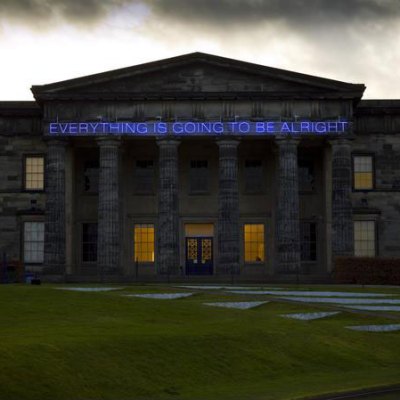In 1874, the year before he died, the architect Alexander Thomson delivered a series of public lectures on the history of architecture. His Glasgow audience must have been surprised at some of his observations. ‘Philosophers,’ he told them, ‘in explaining the nature of light and endeavouring to give us some idea of the rate at which it travels, tell us that some stars are so distant that, although they may have been created thousands of years ago, their light may not yet have reached us, or that if it were possible to fly off into space, we might […] by going to a sufficient distance, witness the very first act of its creation.’
Alexander ‘Greek’ Thomson (1817–75), in an ambrotype of c. 1860. Courtesy the author

Thomson was at once a successful commercial practitioner and a dreamer, almost a mystic, who designed extraordinary buildings in his own style. ‘All who have studied works of art must have been struck by the mysterious power of the horizontal element in carrying the mind away into space, and into speculations upon infinity.’ In his case, horizontality and remorseless repetition articulated by strange exotic detail resulted in urban buildings that recall the sublime architectural compositions painted by John Martin. One admirer of Thomson – who never travelled, never crossed the Channel but just used his imagination to conjure up the ancient world in smoky, industrial Glasgow – considered that ‘his spiritual home was some neutral point equidistant from Athens, Luxor, Nineveh and Jerusalem.’
‘Greek’ Thomson was born 200 years ago on 9 April, but his bicentenary is not being much celebrated. Modern Glasgow has never been happy with this devout Presbyterian architect; these days it prefers the other local hero of national and international stature, Charles Rennie Mackintosh, the 150th anniversary of whose birth falls next year. Mackintosh conforms to the usefully lucrative paradigm of the art nouveau celebrity – Victor Horta in Brussels, Antoni Gaudì in Barcelona, Frank Lloyd Wright in Chicago – interpreted as the lone, misunderstood genius (nonsense in Toshie’s case, as most of his work was carried out through the firm of Honeyman & Keppie). It is invidious to compare the work of the two men: both were most remarkable individual designers who only Victorian Glasgow could have sustained. But whereas the appeal of Mackintosh has much to do with that of art nouveau, Thomson’s work, as the architect Mark Baines has argued, ‘seems to be of continuing relevance in any pursuit of an urban architecture, for there is a sensibility exhibited in his buildings that is able to confer an equal dignity upon all sections of society without unnecessary distinction.’
Alexander Thomson was not always ‘Greek’ Thomson. What is extraordinary about his career is that, having played with the gothic, the baronial, and the Italianate in villas down the Firth of Clyde, he decided, in the mid 1850s, henceforth to adopt the Greek as his only language of expression – at a time when it was completely out of fashion. Not that he became merely an archaeologist, like some earlier Greek revivalists; his search was always for the ‘eternal laws’ that governed form and structure: ‘We do not contrive rules; we discover laws. There is such a thing as architectural truth.’ Thomson advocated ‘trabeation’. ‘The simple unsophisticated stone lintel contains every element of strength which is to be found in the most ingeniously contrived girder, so that Stonehenge is really more scientifically constructed than York Minster,’ he once wrote – a rather extreme position partly explained by his suspicion of the association between the Gothic Revival and the Catholic religion.
Happy to use cast and wrought iron and keen to secure the largest possible sheets of glass so that windows appear only as voids between structural elements, Thomson can, on one level, be seen as a modern. The problem with his work, as with that of others using historical styles, is that many modern commentators, seduced by the slick imagery of modernism and ignorantly blind to subtleties of expression, cannot detect true originality in the use of a past language. Contemporaries could, however. His friend and memorialist, the architect Thomas Gildard, writing about the magnificent large window near the base of the tower of the Caledonia Road Church, noted that it was ‘the grandest individual architectural mere part that I had ever seen […] characterised no less by great power and beauty than by novelty’. Novelty!
Holmwood, Glasgow, designed by Alexander Thomson and constructed in 1857–58. Courtesy the National Trust for Scotland

Most of Thomson’s villas survive, including Holmwood, his finest – for Gildard, an ‘exquisite little gem, at once classic and picturesque, […] as complete, self-contained, and polished as a sonnet’ – which, thanks to the Alexander Thomson Society, is now cared for by the National Trust for Scotland. Most of his tenements and many of his commercial buildings have gone. Of his three great Presbyterian temples, which the American historian Henry-Russell Hitchcock called ‘three of the finest Romantic Classical churches in the world,’ we have one and a half left. The half is the gutted ruin of the Caledonia Road Church in the Gorbals, burned out by arson in 1965 following cynical acquiescence by the then Glasgow Corporation. Even that ruin would have been cleared if not for a magisterial letter from Hitchcock, published in the Glasgow Herald, claiming that ‘it is without question the most remarkable and most distinguished ecclesiastical edifice of the high Victorian decades.’
It would be nice to conclude that times have changed, if it were not for the fact that, incomprehensibly, Thomson’s finest commercial building today stands empty, decaying behind hoardings although right next to Central Station. Egyptian Halls in Union Street was once a remarkable institution. When it opened in 1874 it was not only a fashionable bazaar or shopping centre but a venue for concerts that boasted an exhibition gallery and ‘a ladies’ lavatory and retiring room in connection with [an] elegantly fitted up refreshment bar’. Inside, the structure was partly of iron but it was the majestic, exotic street front that was astonishing: a sort of wide layer cake of different architectural orders, building up to a grand elaborate cornice sailing above a free-standing squat colonnade entirely separate from the strip of glazing behind. And in front once stood six huge cast-iron lamp-posts designed by Thomson (two further examples of which, also cast at the Saracen Foundry of Walter Macfarlane & Co., improbably survive in New Cross in south-east London).
The Egpytian Halls, Glasgow, designed by Alexander Thomson and photographed by Thomas Annan in 1874, the year the building opened. Courtesy the author

Listed at Grade A, Egyptian Halls is a work of imaginative genius by one of the greatest minds in Scottish architecture, and of great importance to the architectural and social history of Glasgow. But it is owned by a developer constrained by circumstances, while both Historic Scotland and Glasgow City Council seem incapable of positive collaborative action to save the building – although the latter is happy to give public money towards the restoration of both Mackintosh’s School of Art and his Willow Tearooms. The current scandalous state of Egyptian Halls is a standing reproach in its designer’s bicentenary year. Glasgow prides itself on once having been European Capital of Culture. The continuing neglect of the legacy of Alexander ‘Greek’ Thomson suggests that its culture does not go very deep.
From the April issue of Apollo. Preview and subscribe here.



